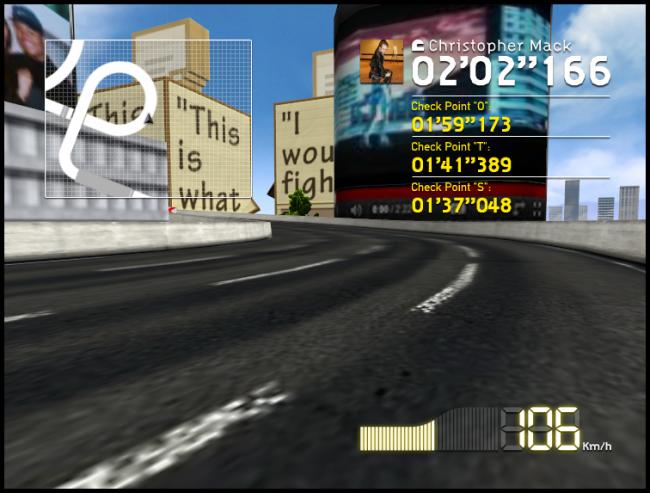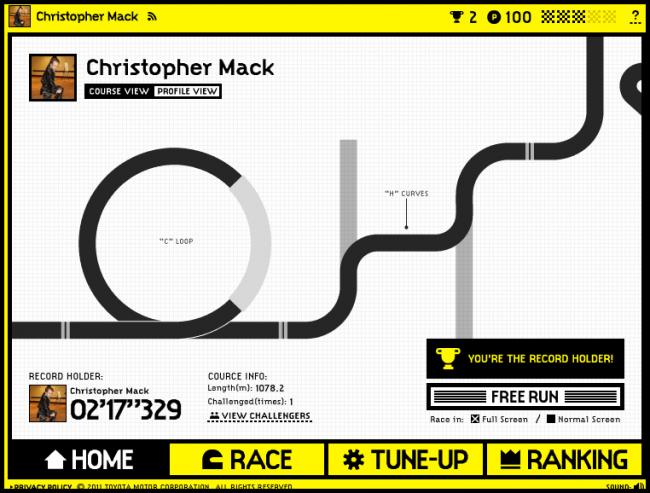- Wondering how to get Monopoly GO! free rolls? Well, you’ve come to the right place. In this guide, we provide you with a bunch of tips and tricks to get some free rolls for the hit new mobile game. We’ll …
Best Roblox Horror Games to Play Right Now – Updated Weekly
By Adele Wilson
Our Best Roblox Horror Games guide features the scariest and most creative experiences to play right now on the platform!The BEST Roblox Games of The Week – Games You Need To Play!
By Sho Roberts
Our feature shares our pick for the Best Roblox Games of the week! With our feature, we guarantee you'll find something new to play!Type Soul Clan Rarity Guide – All Legendary And Common Clans Listed!
By Nathan Ball
Wondering what your odds of rolling a particular Clan are? Wonder no more, with my handy Type Soul Clan Rarity guide.
Social Network Racer Review
Toyota Motor Corporation is taking to Facebook with a new promotional title by the name of Social Network Racer. A slew of interesting ideas, the game dramatically encompasses the social nature of the network, allowing you to race on tracks custom built to your Facebook profile. Sadly, Toyota’s lack of game design experience shows, as the heavy social gimmick is focused on more than the core game.

Social Network Racer is a clever idea that gets pretty boring
Toyota Motor Corporation is taking to Facebook with a new promotional title by the name of Social Network Racer. A slew of interesting ideas, the game dramatically encompasses the social nature of the network, allowing you to race on tracks custom built to your Facebook profile. Sadly, Toyota’s lack of game design experience shows, as the heavy social gimmick is focused on more than the core game.
There is no narrative to Social Network Racer. Players simply race around a track and attempt to get the best possible time they can. That’s about it. Handling is controlled in the first person and done via the arrow keys. It is a bit annoying not to be able to use the classic WASD controls, but you get used to it. In fact, the handling is actually quite good, as players can easily drift around corners and make hairpin turns with a minimal learning curve. At worst, coming out of a turn can be a little temperamental.

As far as racing games go, however, Social Network Racer is a bit drab. Though the levels are technically infinite, they all feel about the same. Each track is a cityscape, and consists of essentially the same challenges of loops, hairpins, tunnels, and so on. Additionally, the only way to race is either through a time trial or practice mode. The latter just lets you run the course with no significant reward, while the former allows you to compete for fastest time leaderboard ranking amongst friends and other global players. That said, performing a time trial requires one “credit,” which regenerates about every 90 minutes.
What makes the game distinctive is that each Facebook profile on the game has its own procedurally generated track. That means the track for your profile will have a different layout of challenges than a friend’s. The core challenges are the same — just rearranged — but it is the social profile integration that is incredibly entertaining. As you race through the city streets, images, status updates, and other postings that have been made will be plastered on billboards, across skyscrapers, and along banners.
It truly is a nostalgic, and personalized, experience as the game will look back several weeks (even months) and pull up things the you may have said or posted. It does the same for every user in the game. Unfortunately the game does not do this optimally and the initial loading time was completely unacceptable. The first time the app was played, it took north of a minute and a half to fully load. After that, thankfully, the loads were a bit more reasonable at around 20 to 30 seconds.

The only thing Social Network Racer has beyond the profile gimmick is that players earn credits for each time trial race is completed and each achievement unlocked. This can then be used to “Tune Up” your car in terms of maximum speed, handling, acceleration, and braking. All are fairly standard to any racing title, but are not terribly noticeable since the car already handles very well. That said, they do help eek out a few seconds when competing for top time slots. The game also offers you the option to buy a single use boost to your car to improve its performance for just one race.
The biggest problem with Social Network Racer is that there just isn’t any real sense of competition or progression. You race around tracks that all have the same basic style, alone, and upgrading one’s car is nothing more than some yellow bars that increase. You don’t even get to see what you are driving. There’s nothing to collect, no garage show room, and there isn’t so much as even a ghost racing mode (where you would race a time trial against ghost-style cars representing top times) to create the illusion of synchronous competition.
It’s an amazing idea from a social gaming perspective, but as a racing game, it just gets kind of boring after a few laps.

The good

The bad
More articles...
Monopoly GO! Free Rolls – Links For Free Dice
By Glen Fox
Wondering how to get Monopoly GO! free rolls? Well, you’ve come to the right place. In this guide, we provide you with a bunch of tips and tricks to get some free rolls for the hit new mobile game. We’ll …Best Roblox Horror Games to Play Right Now – Updated Weekly
By Adele Wilson
Our Best Roblox Horror Games guide features the scariest and most creative experiences to play right now on the platform!The BEST Roblox Games of The Week – Games You Need To Play!
By Sho Roberts
Our feature shares our pick for the Best Roblox Games of the week! With our feature, we guarantee you'll find something new to play!Type Soul Clan Rarity Guide – All Legendary And Common Clans Listed!
By Nathan Ball
Wondering what your odds of rolling a particular Clan are? Wonder no more, with my handy Type Soul Clan Rarity guide.







